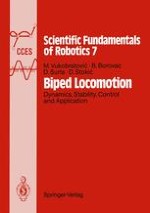Here for the first time in one book is a comprehensive and systematic approach to the dynamic modeling and control of biped locomotion robots. A survey is included of various approaches to the control of biped robots, and a new approach to the control of biped systems based on a complete dynamic model is presented in detail. The stability of complete biped system is presented for the first time as a highly nonlinear dynamic system. Also included is new software for the synthesis of a dynamically stable walk for arbitrary biped systems, presented here for the first time. A survey of various realizations of biped systems and numerous numerical examples are given. The reader is given a deep insight into the entire area of biped locomotion. The book covers all relevant approaches to the subject and gives the most complete account to date of dynamic modeling, control and realizations of biped systems.
